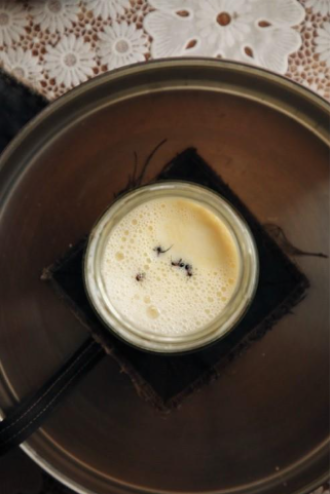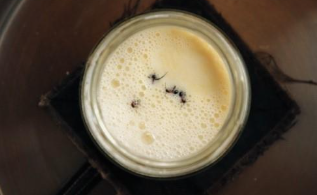Media release
From:
Making yogurt with ants
Researchers recreated a nearly forgotten yogurt recipe that was once was once common across the Balkans and Turkey—using ants. Reporting in the Cell Press journal iScience on October 3, the team shows that bacteria, acids, and enzymes in ants can kickstart the fermentation process that turns milk into yogurt. The work highlights how traditional practices can inspire new approaches to food science and even add creativity to the dinner table.
“Today’s yogurts are typically made with just two bacterial strains,” says senior author Leonie Jahn from the Technical University of Denmark. “If you look at traditional yogurt, you have much bigger biodiversity, varying based on location, households, and season. That brings more flavors, textures, and personality.”
Red wood ants (Formica species) can be found crawling through the forests of the Balkans and Turkey, where this yogurt-making technique was once popular. To better understand how to use these ants to make yogurt, the researchers visited co-author and anthropologist Sevgi Mutlu Sirakova’s family village in Bulgaria, where her relatives and other locals remember the tradition.
“We dropped four whole ants into a jar of warm milk by the instruction of Sevgi’s uncle and community members,” recalls lead author Veronica Sinotte of the University of Copenhagen, Denmark. The jar was then tucked into an ant mound to ferment overnight. By the next day, the milk had started to thicken and sour. “That’s an early stage of yogurt, and it tasted that way as well.”
The researchers, who tested the yogurt during their trip, described it as slightly tangy, herbaceous, and having flavors of grass-fed fat.
Back in Denmark, the team dissected the science behind the ant yogurt. They found that the ants carry lactic and acetic acid bacteria. Acids produced by these bacteria help coagulate the dairy. One type of these bacteria was similar to that found in commercial sourdough.
The insects themselves also help in the yogurt-making process. Formic acid, which is part of the ant's natural chemical defense system, acidifies the milk, affects its texture, and likely creates an environment for yogurt’s acid-loving microbes to thrive, say the researchers. Enzymes from the ant and the microbes work in tandem to break down milk proteins and turn milk into yogurt.
The researchers compared yogurts made with live, frozen, and dehydrated ants. Only live ants seeded the right microbial community, meaning they are best suited for yogurt making. However, the team found that caution was necessary to make sure the ant products were safe to consume: live ants can harbor parasites, and freezing or dehydrating ants can sometimes allow harmful bacteria to flourish.
To test out the contemporary culinary possibilities of ant yogurt, the team then partnered with chefs at Alchemist, a two-star Michelin restaurant in Copenhagen, Denmark, who gave the traditional yogurt a modern twist. They served guests several concoctions including yogurt ice-cream sandwiches shaped like an ant, mascarpone-like cheeses with a pungent tang, and cocktails clarified with a milk wash—all inspired by ant yogurt and using the insect as a key ingredient.
“Giving scientific evidence that these traditions have a deep meaning and purpose, even though they might seem strange or more like a myth, I think that’s really beautiful,” says Jahn.
“I hope people recognize the importance of community and maybe listen a little closer when their grandmother shares a recipe or memory that seems unusual,” says Sinotte. “Learning from these practices and creating space for biocultural heritage in our foodways is important.”
Multimedia








 International
International




